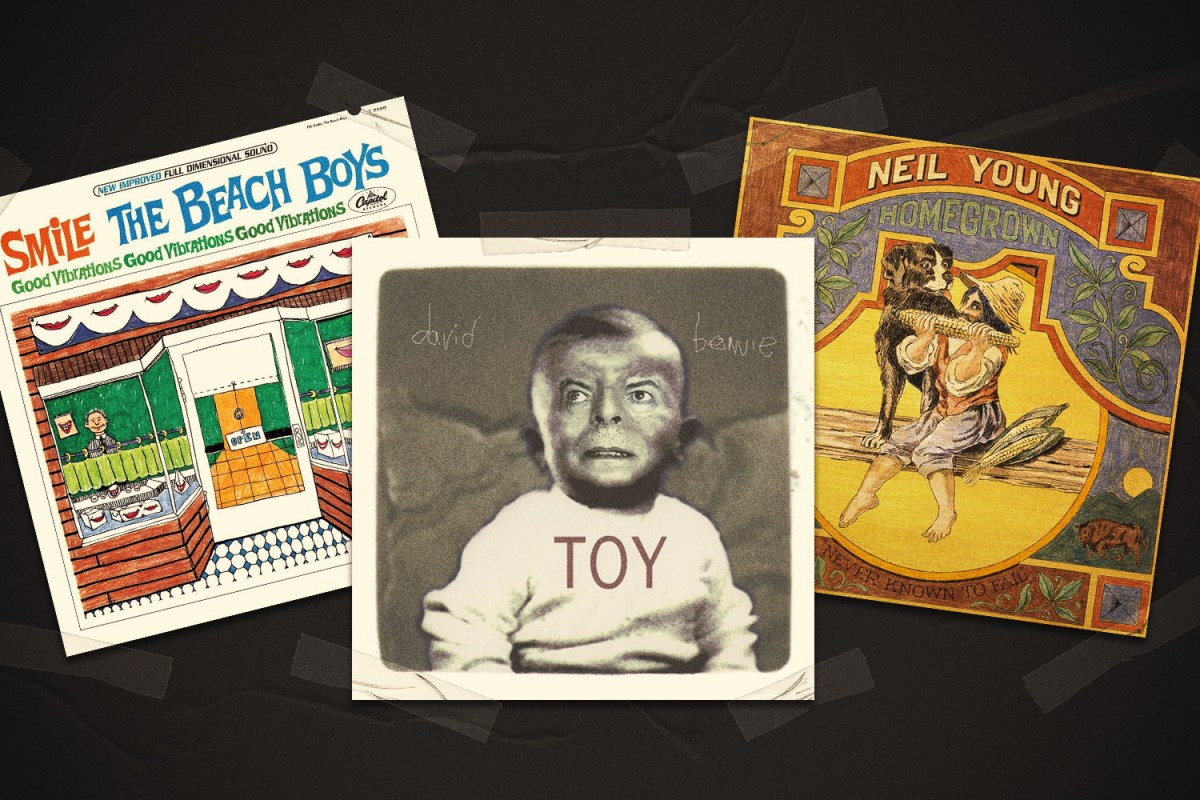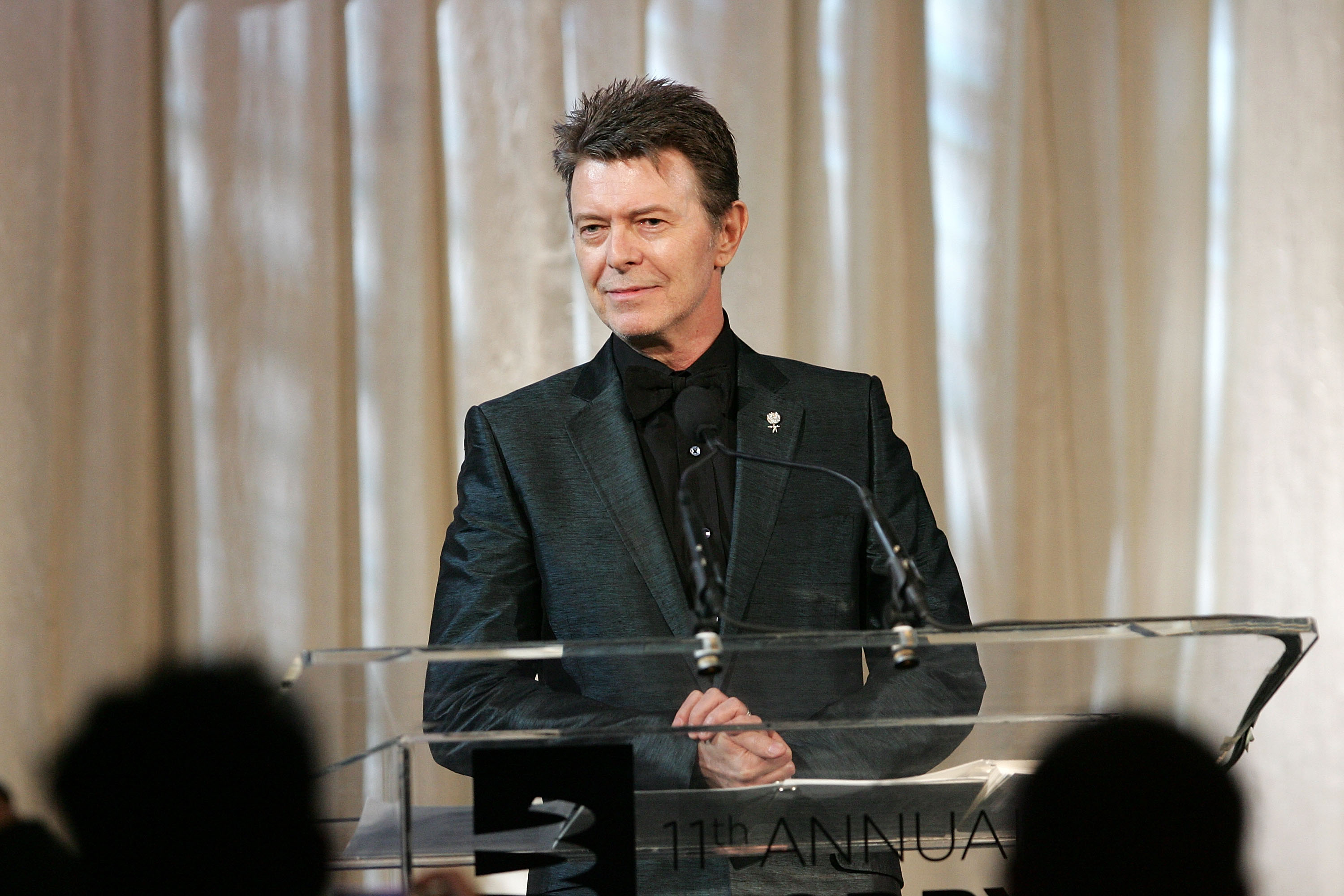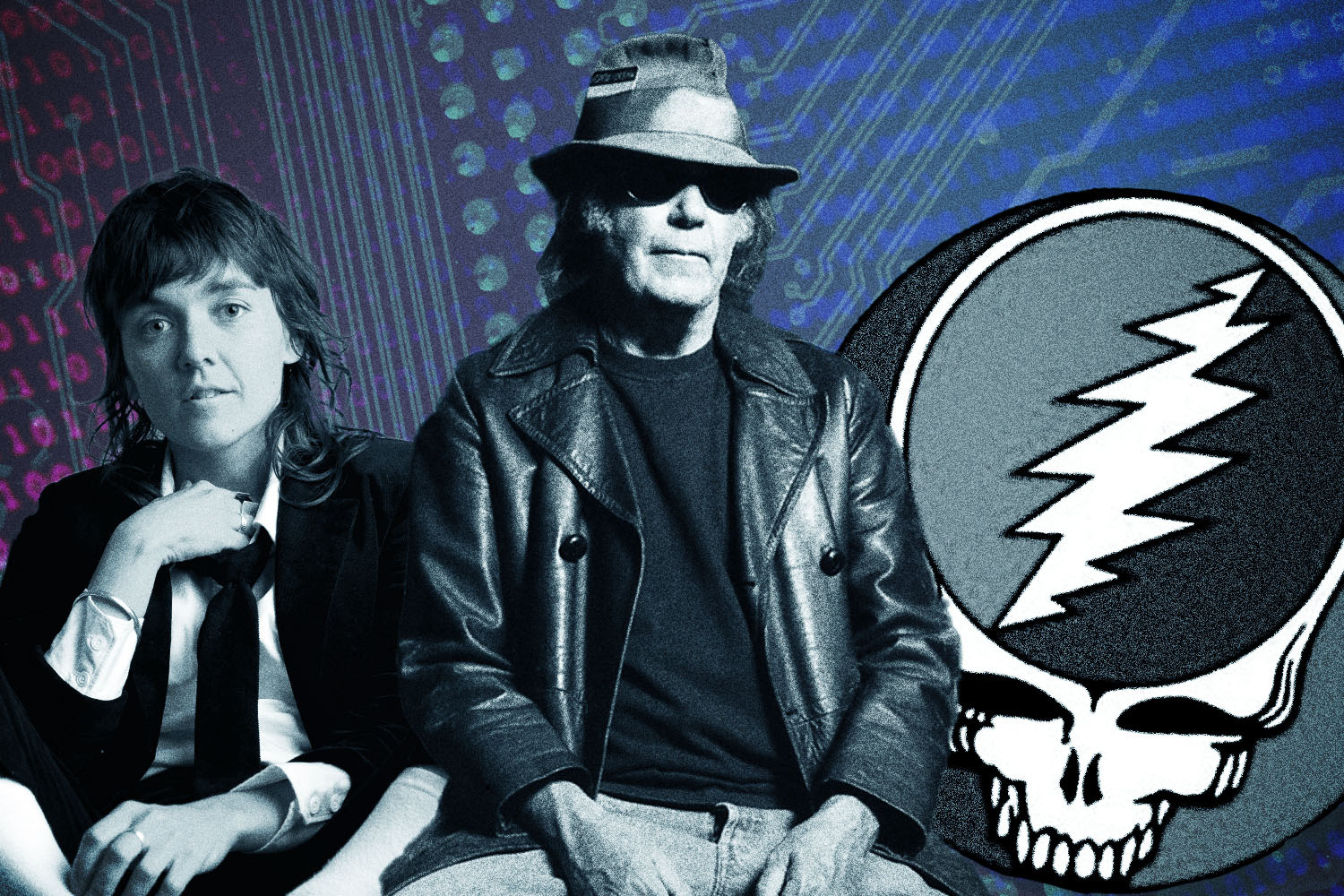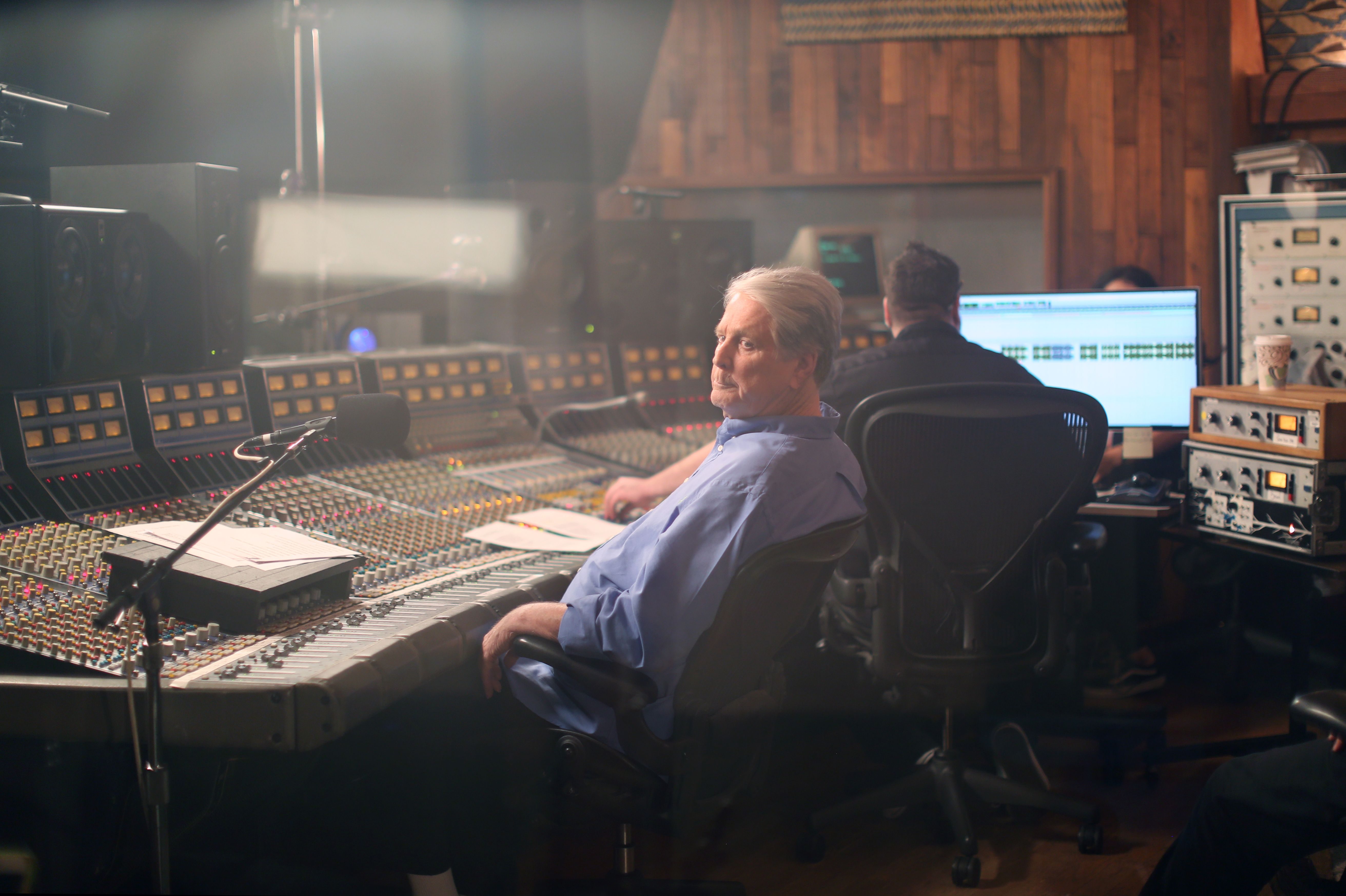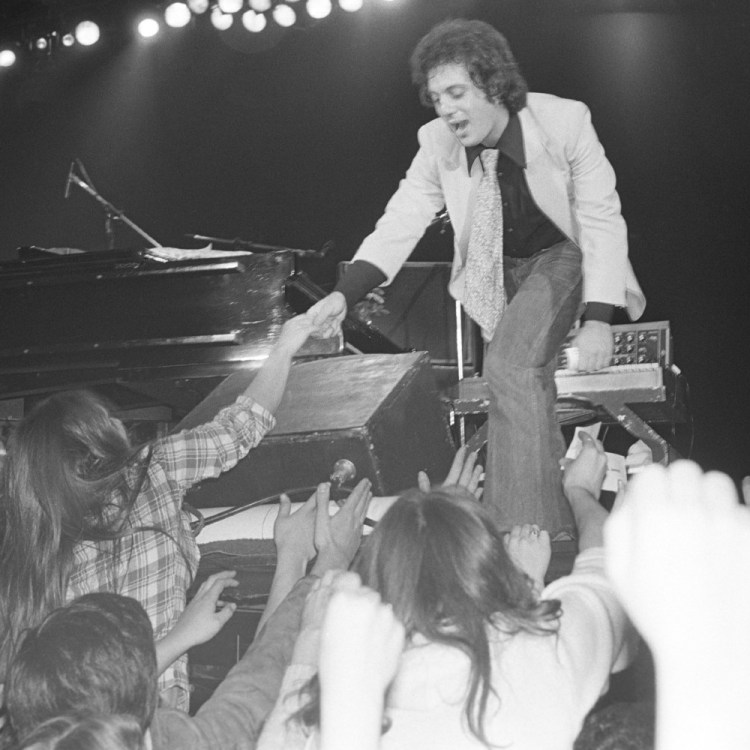This week marks the release of the David Bowie 5: Brilliant Adventure (1992 – 2001) box set, and while the massive seven-CD or 18-LP set also features plenty of exciting rarities and remastered material, there’s one part of it in particular that’s sure to be the biggest draw for Bowie completists. The box set includes the first official release of Toy, the long-shelved lost album that saw the legendary musician re-recording some of his lesser-known early work.
“Toy is like a moment in time captured in an amber of joy, fire and energy,” co-producer Mark Plati said in a statement. “It’s the sound of people happy to be playing music. David revisited and re-examined his work from decades prior through prisms of experience and fresh perspective — a parallel not lost on me as I now revisit it 20 years later. From time to time, he used to say ‘Mark, this is our album’ — I think because he knew I was so deeply in the trenches with him on that journey. I’m happy to finally be able to say it now belongs to all of us.”
So now that you’ve had some time to absorb and digest Toy, it’s time to refocus our music-nerd hopes and dreams onto some other famously “lost” releases. We’ve rounded up several that, like Toy, are happily no longer entirely lost, as well as some that could potentially be released in the future, and others that, sadly, will most likely remain as elusive as the Holy Grail.
Lost Albums That Are No Longer Lost
The Beach Boys, Smile
Arguably the most famous lost record of all time, Smile was intended to be a 12-track follow-up to Pet Sounds, composed almost entirely by Brian Wilson and guest lyricist Van Dyke Parks, and famously described by Wilson as “a teenage symphony to God.” That lofty concept, combined with creative differences within the band and Wilson’s struggle with mental illness, eventually prevented the album from being finished, but in 2011 it was released as The Smile Sessions, a box set that includes an approximation of what the finished album would have sounded like along with outtakes and highlights from the Smile sessions. It took home Best Historical Album at the 2013 Grammy Awards.
Bob Dylan and Johnny Cash, The Dylan/Cash Sessions
These two icons teamed up in February of 1969 (with Carl Perkins on lead guitar, to boot), spending two days together in the studio recording 15 songs. For a long time, only one of those — a cover of Dylan’s “Girl from the North Country” that wound up on his Nashville Skyline album — was officially released, but the rest of the recordings from those sessions were finally unleashed last year as part of Dylan’s bootleg series on The Bootleg Series Vol. 15: Travelin’ Thru, 1967–1969.
Neil Young, Homegrown
Last year, Neil Young finally unleashed his long-lost 1975 album Homegrown. Fans have been clamoring to hear it (which you can do here) ever since Young shelved the deeply personal record, which was recorded in the wake of his divorce from actress Carrie Snodgrass. It features an impressive studio band that included Levon Helm, Robbie Robertson, Tim Drummond, Karl T. Himmel, Ben Keith and Stan Szlelest, as well as guest vocals from Emmylou Harris.
Marvin Gaye, You’re the Man
Marvin Gaye has another lost album under his belt — the disco-heavy Love Man — but fortunately this one, intended to be the 1972 follow-up to What’s Going On, has seen the light of day. Gaye canceled the original release of You’re the Man due to conflicts with Motown’s Berry Gordy and the tepid response to its lead single, the title track. It finally came out in the spring of 2019, in celebration of what would have been the legendary soul singer’s 80th birthday.
Prince, Welcome 2 America
Back in 2010, Prince recorded Welcome 2 America, a 12-track album meant to reflect his “concerns, hopes and visions for a shifting society, presciently foreshadowing an era of political division, disinformation, and a renewed fight for racial justice,” as his estate describes it. He even plotted out a full tour pegged to its release, but eventually he shelved it with zero explanation, locking it away in his vault. That’s where it remained until his untimely death, but this year it finally saw the light of day — sparking debate over whether it’s ethical for a deceased artist’s estate to put out an album they never intended to release.
David Bowie, Toy
Toy was intended to be a 2001 David Bowie album comprised of new material as well as reworked versions of some of his lesser-known songs from the ’60s, but as the Thin White Duke himself wrote that year, “I’m finding EMI/Virgin seem to have a lot of scheduling conflicts this year, which has put an awful lot on the back burner.” As a result of the label dragging its feet, Bowie left and signed with Columbia instead, eventually releasing Heathen (which contained two Toy tracks, “Uncle Floyd” and “Afraid”). Several other cuts were eventually released as B-sides, and the album leaked online in 2011, but this week marks its first official, complete release.
Lost Albums That Could Potentially Be Released
Green Day, Cigarettes and Valentines
In 2003, Green Day was nearly done with their follow-up to 2000’s Warning when the masters were mysteriously stolen from their studio. Rather than re-record Cigarettes and Valentines, the band decided to start over from scratch, eventually writing and recording 2004’s American Idiot instead. Eventually, the tapes were recovered, and the title track was released on the 2011 live album Awesome as Fuck. But Billie Joe Armstrong still seems iffy on whether the rest of the album will ever be released. “It’s pretty much in the vault right now,” Armstrong told NME. “There was the one song, ‘Cigarettes and Valentines,’ that we brought out live. I don’t know, we’ll see if any of that stuff ends up seeing the light of day.”
Prince, Camille
Prince famously has an entire vault’s worth of unreleased material, including much-publicized shelved albums like Dream Factory and The Black Album. But one of his most fascinating projects that never officially got a release is Camille, a 1986 album in which he performed as a feminine alter-ego named Camille by pitching up his vocals to make them sound more androgynous. The idea was to release the record under the Camille pseudonym and never acknowledge that she was, in fact, Prince. Just weeks before its release, however, the Purple One pulled the plug, though several of its tracks (including “Housequake” and “If I Was Your Girlfriend”) wound up on Sign o’ the Times. These days, “Rebirth of the Flesh” is the only Camille track that remains officially unreleased, though it exists online as a bootleg.
Bruce Springsteen, Electric Nebraska
The Boss’s fleshed-out, full-band version of Nebraska has long been the stuff of rock lore, and in his 2016 autobiography Born to Run, Bruce Springsteen confirmed that he did, in fact, record it. “I went into the studio, brought in the band, re-recorded and remixed everything,” he writes. “On listening, I realized I’d succeeded in doing nothing but damaging what I’d created.” “It was all very hard-edged,” drummer Max Weinberg told Rolling Stone. “As great as it was, it wasn’t what Bruce wanted to release. There is a full-band Nebraska album — all of those songs are in the can somewhere.”
Juliana Hatfield, God’s Foot
God’s Foot was intended to be Juliana Hatfield’s third solo album, recorded in 1996, but her label got in the way: Atlantic Records rejected it, unsatisfied with its potential singles, leading Hatfield to ask to be released from her contract. Atlantic obliged, but the label retained the rights to the songs recorded during the God’s Foot sessions. Some tracks have leaked online in subsequent years, but we’re yet to get the whole project in its entirety, although Hatfield did tease the idea of re-recording it in 2018.
Jimi Hendrix, Black Gold
In early 1970, armed with just his voice and a Martin acoustic guitar, Jimi Hendrix laid down 16 demos for an autobiographical concept album called Black Gold. At the Isle of Wight Festival, he handed over the tapes to drummer Mitch Mitchell. Hendrix, of course, died in September of that year, and Mitchell forgot he had the tapes. For 22 years, they were presumed stolen while they were actually in Mitchell’s England home. Though they were discovered in 1992, the Hendrix estate has faced some legal hurdles in trying to release the recordings. In 2010, they promised Black Gold would be released “this decade,” and while they’ve officially missed that deadline, we can still hold out hope.
Shirley Manson’s solo album
While Garbage were on hiatus in the aughts, frontwoman Shirley Manson set about recording a solo album that reportedly featured contributions from Weezer’s Rivers Cuomo. However, when she presented the record to Geffen, her label at the time, she was told it was “too dark.” “They wanted me to have international radio hits and ‘be the Annie Lennox of my generation,’” Manson told Vanity Fair in 2012. Eventually, she and Geffen parted ways, Garbage reunited and the solo project got shelved. But perhaps one day we’ll get to hear it and decide for ourselves whether there’s such a thing as “too dark.”
Lost Albums That Will Likely Stay Lost
Jeff Beck, The Motown Album
In 1970, Jeff Beck went to record at Motown’s legendary Hitsville studios in Detroit with the intentions of cutting an album. Things got off to a rocky start thanks to his decision to bring drummer Cozy Powell with him. “I said, ‘I gotta go to Motown, and you’re coming as well,’” Beck told Rolling Stone in 2010. “What the hell was I doing taking a rock drummer, with two huge Ludwig bass drums, into Motown? They hated us right away.” Things never quite came together. As Beck recalled, “I wanted to make a band that understood the Motown feel, then give it more oomph. But at Motown, we got further and further away from the rock part, because they didn’t understand that.” He came away from the sessions with nine or 10 tracks — finished, but not mixed — of which he has the only copy. “I’ve still got the multi-track [tape], although I bet if you put that on the machine now, it will collapse into pieces,” he said. “I made one copy onto cassette. That’s all there is.”
The Who, Lifehouse
Pete Townshend’s concept behind Lifehouse, the abandoned sci-fi rock opera meant to follow up Tommy, is murky at best. It involved converting audience members’ biorhythms into musical themes with a synthesizer, the hunt for a “universal chord,” and a dystopian future in which people receive entertainment intravenously and go to war with a tribe in the woods who have preserved rock ‘n’ roll. Eventually, he nearly drove himself mad and wound up pulling the plug, instead reimagining some of its tracks for the far-more-straightforward classic Who’s Next. Lifehouse did sort of see the light of day in 2000 in the form of Townshend’s Lifehouse Chronicles box set, which featured demos, themes and experiments related to the project, but a completed studio version of the album as Townshend originally envisioned it remains elusive.
Pink Floyd, Household Objects
Following up a massive success can be a tricky thing, and Pink Floyd nearly gave in to the urge to get really weird after 1973’s Dark Side of the Moon. The concept for the abandoned Household Objects project is exactly what it sounds like: the group decided to record the album without any musical instruments, relying instead on household items like brooms, hammers, light bulbs, wood saws and hand mixers. “We’d spend days getting a pencil and a rubber band till it sounded like a bass,” Richard Wright explained in a 2007 BBC documentary. “I remember sitting down with Roger and saying, ‘Roger, this is insane!’” “A lot of the time it would just be like plonky noises,” David Gilmour added. “Ultimately, to me personally, it became rather unsatisfying.” They gave up after a month, and only two semi-complete tracks have ever seen the light of day: “The Hard Way” was released as a bonus track in 2011, and “Wine Glasses” was incorporated into “Shine On You Crazy Diamond” on Wish You Were Here instead.
Dr. Dre, Detox
We don’t have enough time or space here to get into Detox’s lengthy history of being scrapped and picked up again, but Dr. Dre’s third solo album — which he often called his “final album” — is the stuff of legend at this point, often referred to as “the hip-hop Chinese Democracy” thanks to how long it’s allegedly been in the works. Over the course of nearly 20 years, Dre reportedly worked with everyone from Eminem, 50 Cent, and Busta Rhymes to Kendrick Lamar, T.I., Rick Ross, Lil Wayne, Skylar Grey and Mary J. Blige for the project. But in 2015, he appeared to shelve it yet again, releasing a companion album to the N.W.A. biopic Straight Outta Compton instead.
Amy Winehouse, Unfinished third LP
After her tragic death at the age of 27 in 2011, Island Records put out some previously unreleased Amy Winehouse tracks on the posthumous compilation Lioness: Hidden Treasures. But the singer had also been working on her third studio album at the time of her death. According to producer Salaam Remi, she had written and recorded demos for about 14 tracks. Those songs will never see the light of day, however, as they were destroyed by Universal Music U.K. chairman/CEO David Joseph. “It was a moral thing,” Joseph told Billboard. “Taking a stem or a vocal is not something that would ever happen on my watch. It now can’t happen on anyone else’s.”
Seal, Togetherland
Back in 1999, Seal recorded Togetherland, an experimental, underground club album that represented a significant sonic departure for him. It was originally slated for a 2001 release, but Warner Bros. ultimately rejected it over concerns that it wouldn’t be commercially successful. Seal released Seal IV instead, and it seems his opinion of Togetherland has soured over the years; in 2010, he tweeted that the album would “NEVER see the light of day whilst there’s blood in my veins.”
This article appeared in an InsideHook newsletter. Sign up for free to get more on travel, wellness, style, drinking, and culture.
